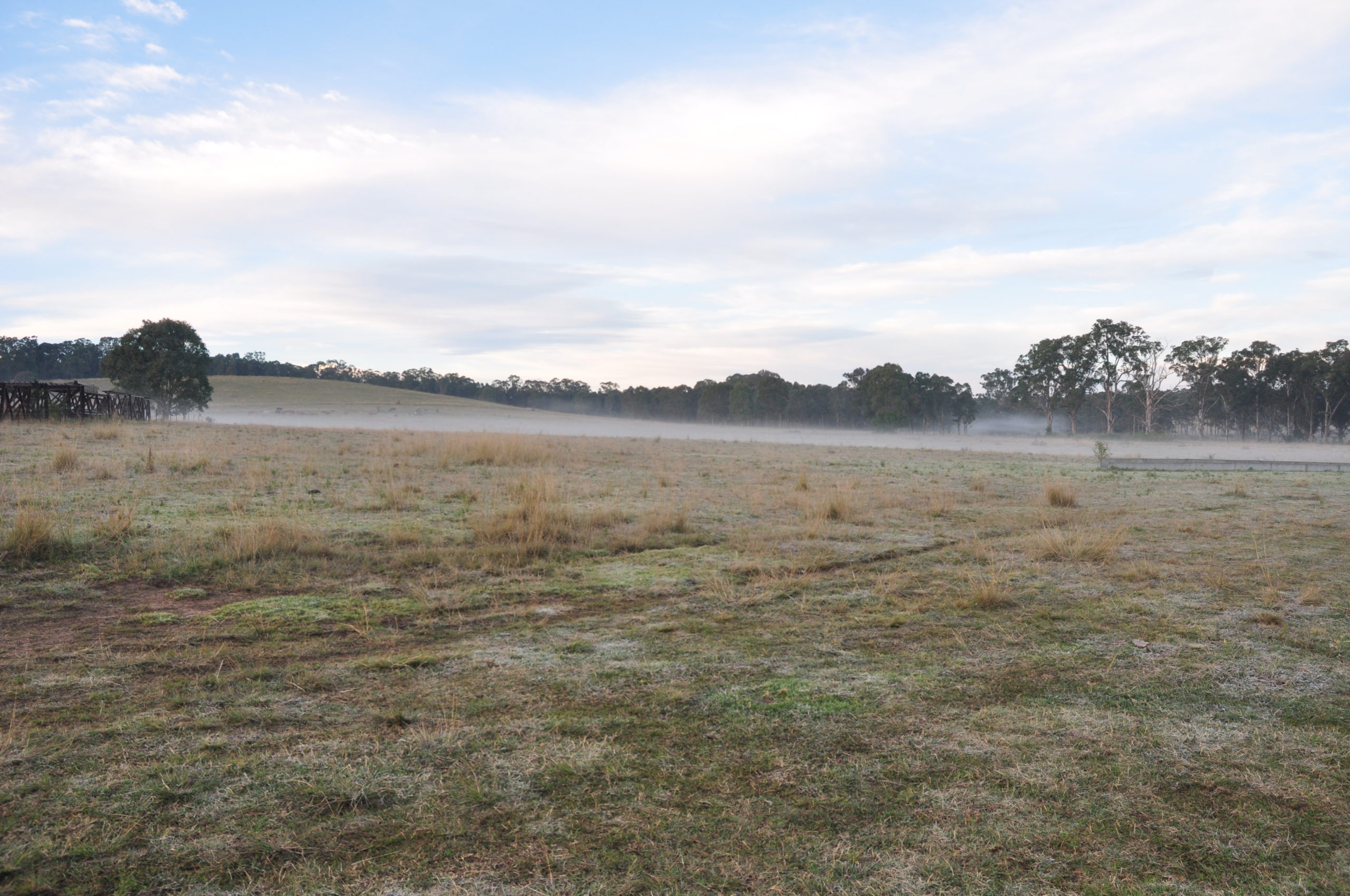
Archaeology at Leppington
Archaeology undertaken at East Leppington, NSW, provides new insight into Aboriginal culture and practices in the area. Stockland commissioned this work prior to the construction of Willowdale, a new residential community near Campbelltown.

Image above: Panorama of the site prior to development.
Archaeological excavations were undertaken between June and September 2013, by a team of local Aboriginal community members and archaeologists from GML Heritage.
An Excavation Report was developed, and key findings are detailed below. Click here to read the full excavation report.
Image right: Across a domiciliary area (or living site) where we recovered evidence for cooking areas, stone making areas and areas where no archaeology remained and would have been used for sleeping, dancing or making other items like clothes, baskets and wooden items.
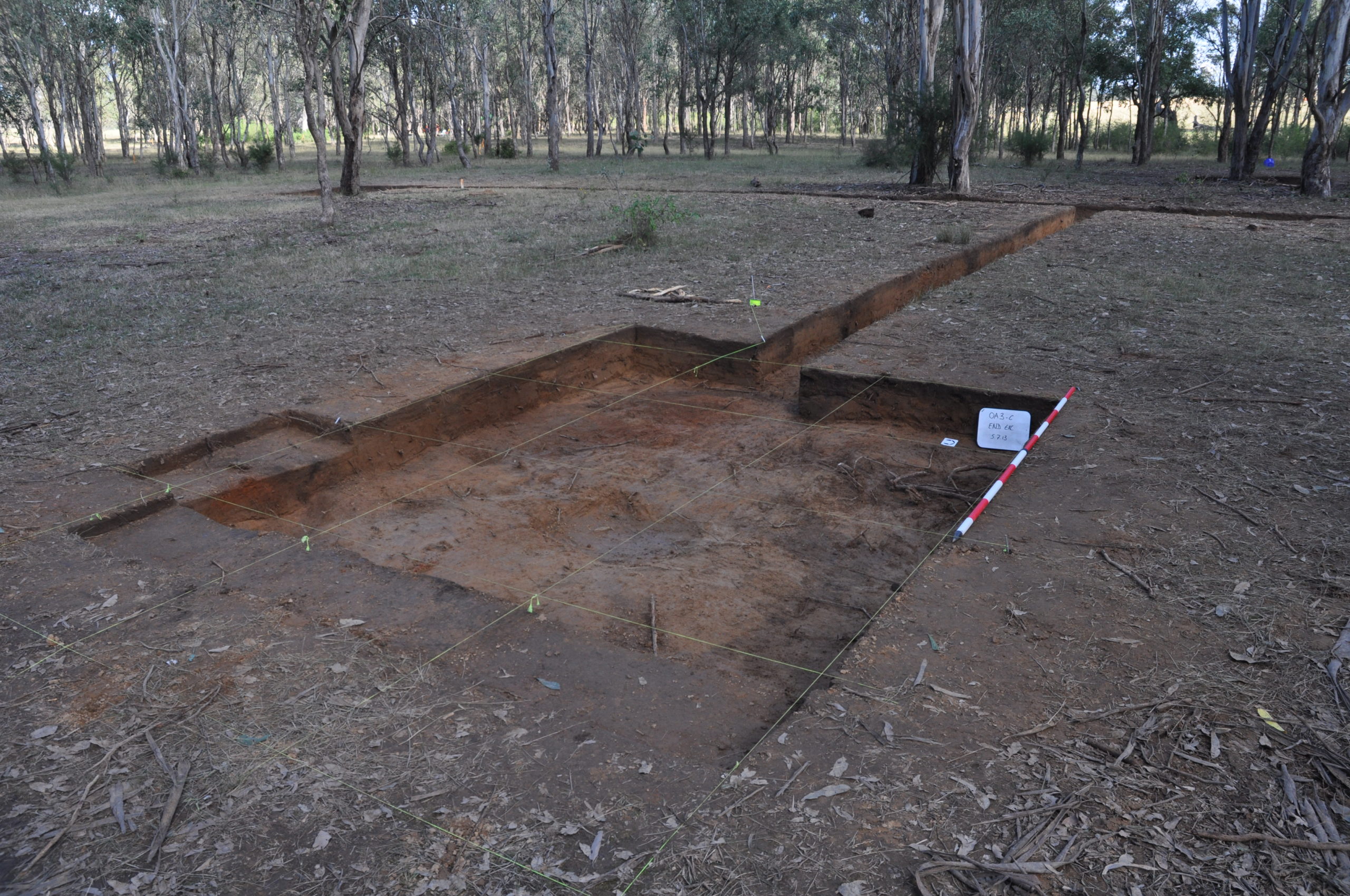
The Aboriginal sites investigated and associated archaeological objects have provided us with new insight into living areas, cooking areas and clay ball manufacturing sites at East Leppington.
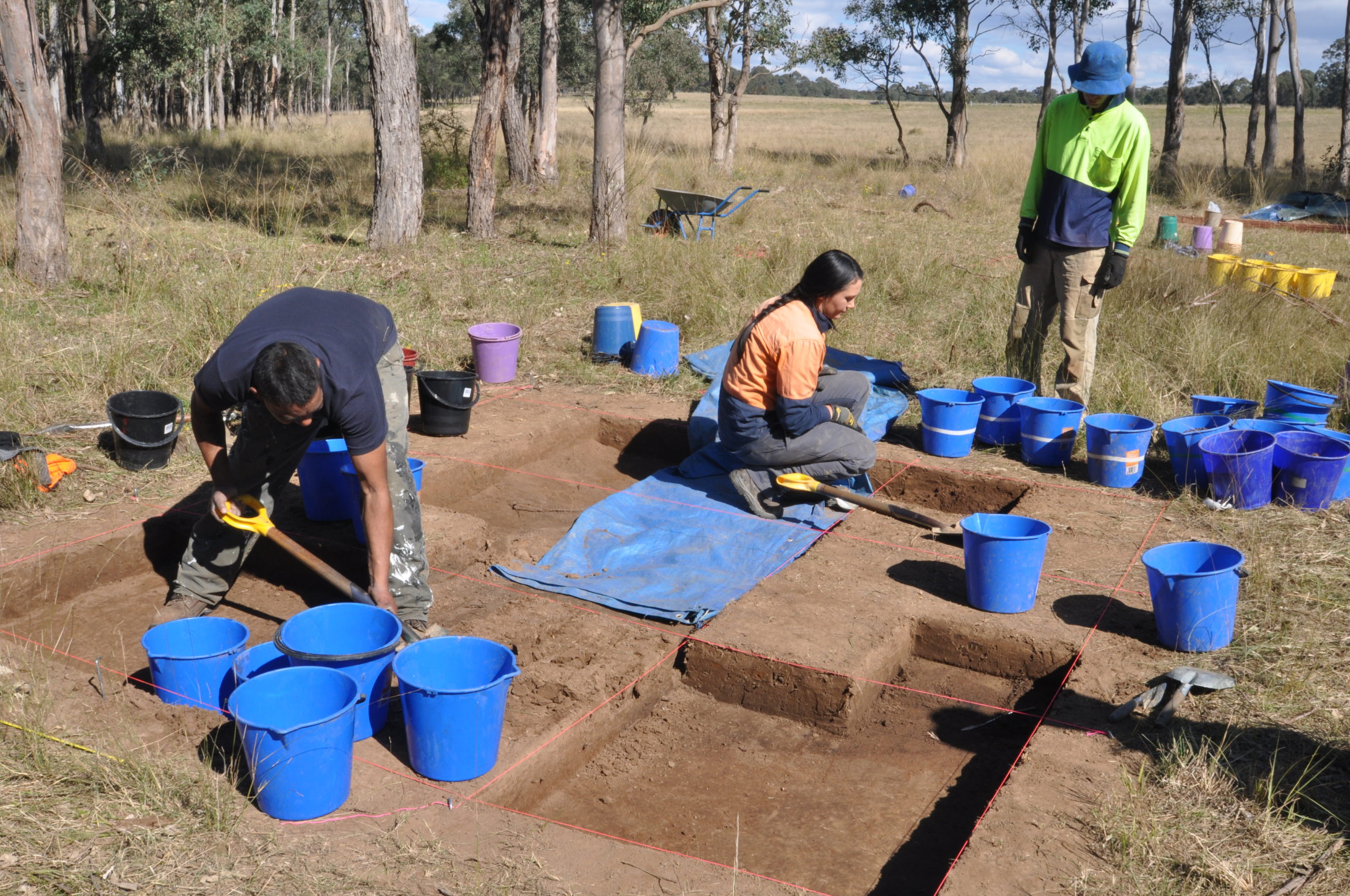
Image above: Aboriginal representatives excavating a site at the base of the scenic hills
Living or Habitation Areas
Some areas of the landscape contained a range of archaeological evidence spaced across a defined area; these are called ‘domiciliary areas’ and represent camping areas or ‘homes’. There could have been spaces allocated for sleeping, cooking, dancing, making objects and items, making stone tools etc.
Image left: Trowel excavation of quadrants within a ‘traditional’ feature
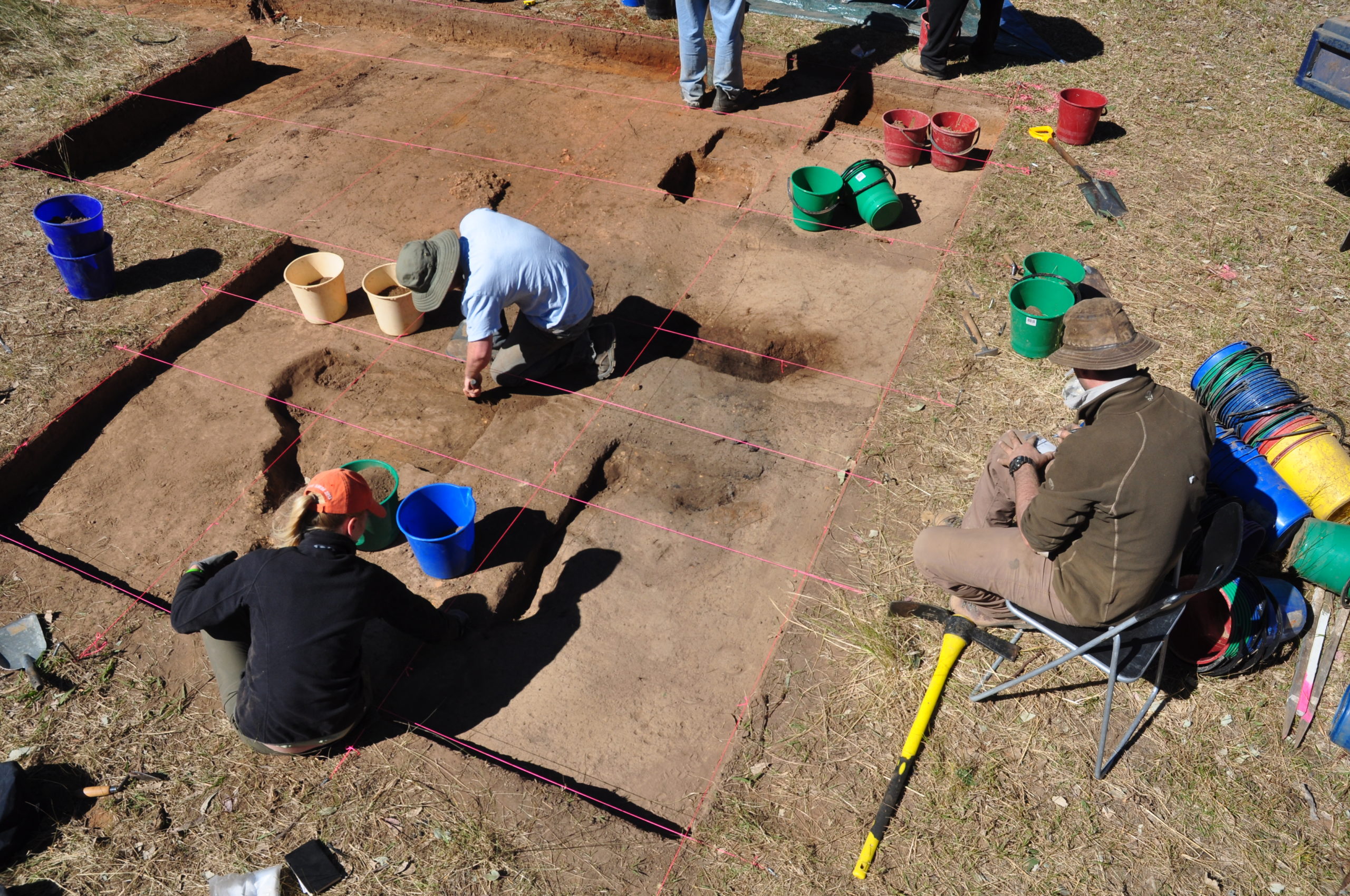
Excavation across one of these zones identified that it had been used for a very long time and contained a lot of ancient evidence for Aboriginal occupation at East Leppington.
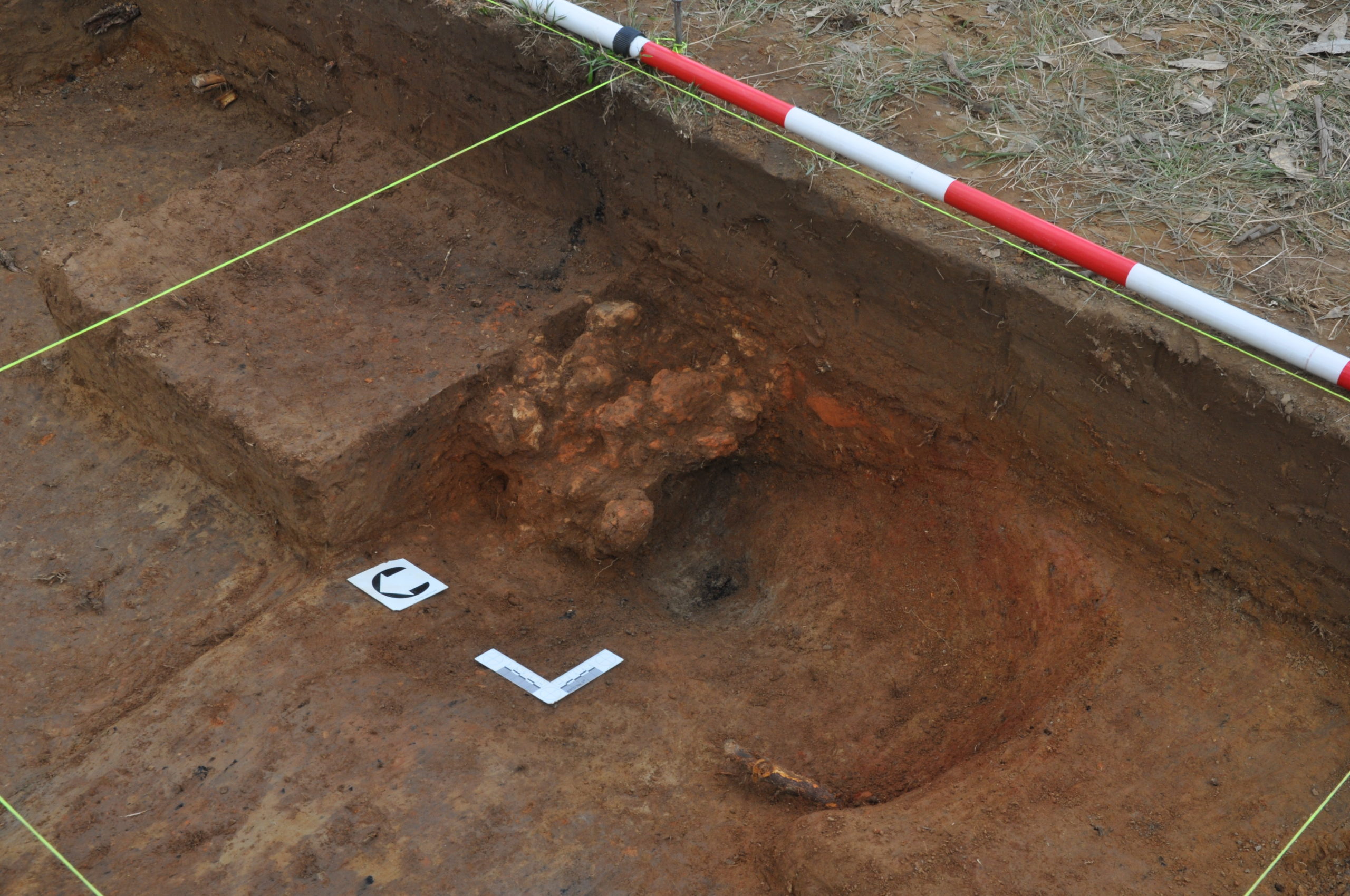
Image above: The intact ground oven: you can see the hollow of the oven (excavated on the right), the remains of the fire (the grey and black at the base), the clay balls packed over the location the food was placed, and the soil packing around the top of the oven.
Cooking Areas
Aboriginal people cooked using fire, on small fire places (hearths) and in ground ovens. Ground ovens have been previously excavated in Sydney before, however, the excavations at East Leppington uncovered thirteen ovens, and one which remained intact. We have dated the remains of carbon from seven of the ground ovens and found that these features were used over the last 1,000 years—before this time Aboriginal people cooked using different techniques.
Image right: A cooking area in a habitation site. The stained black areas are carbon remains from Aboriginal fires. This area would have been used for a long period of time to create such an accumulation of fire places. This area was used to cook food for over 2,000 years.
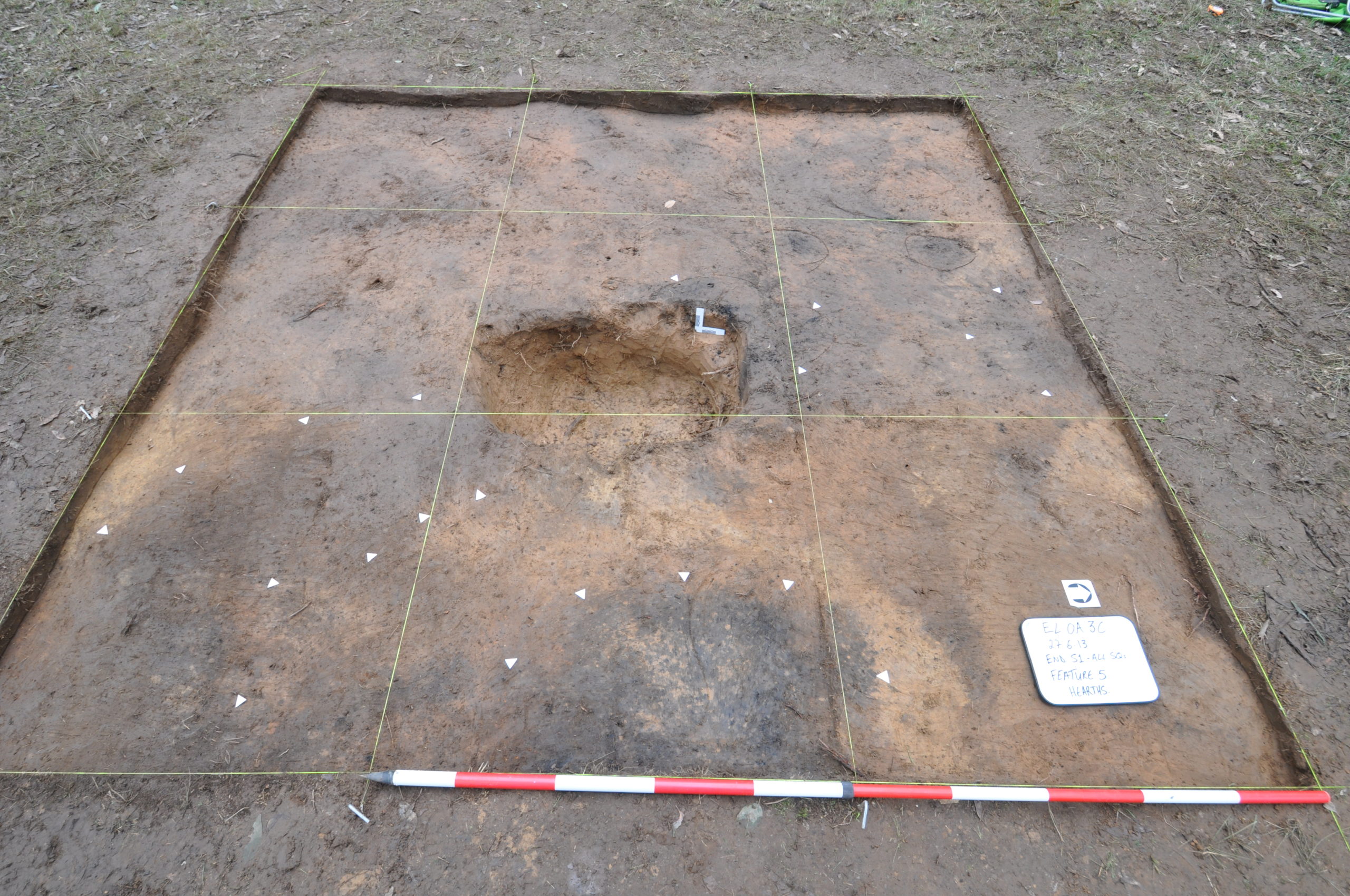
It was initially hypothesised that the ground ovens may have been used for baking or steaming the rhizomes of water based plants such as the bulrush, Typha. These plants would have grown densely in the two creeks and wetlands surrounding the camping areas.
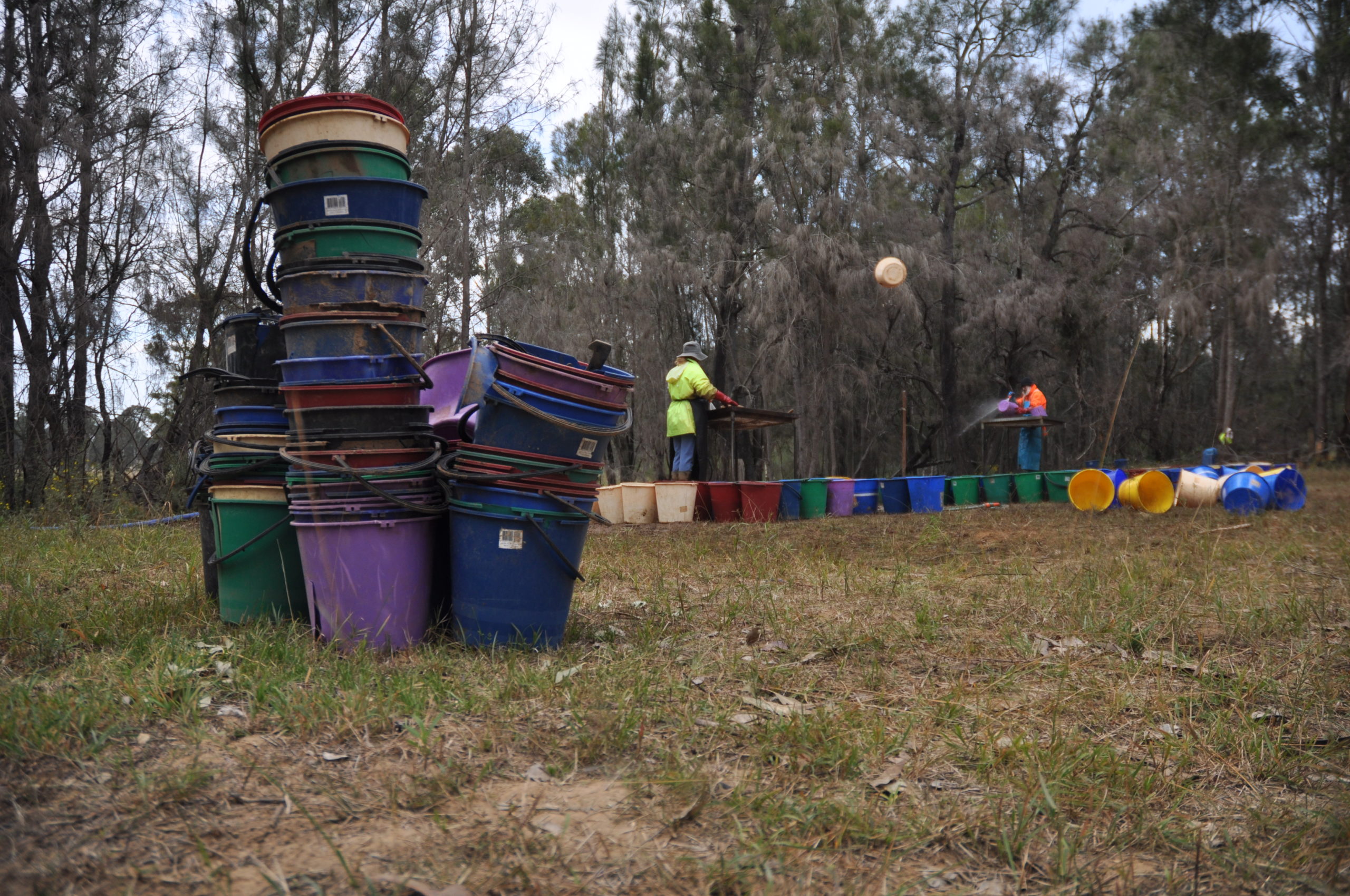
Image above: All excavated soil was taken to a wet sieving area and sieved using hoses to recover stone (and other) artefacts
The rhizomes need to be baked to soften them and break down the starches, in order to make them edible. Roasting plant material would have allowed a lot of food to be cooked relatively quickly, providing a meal for large numbers of people. Studies outside of Sydney have shown that many groups of Aboriginal people used these rhizomes as a primary source of food.
We asked the ANU to undertake analysis of the soils from a ground oven, a hearth and the baked clay balls used to cook. The analysis identified that the ovens and baked clay balls had been used to cook meat, or plants outside their flowering season. Simply, Aboriginal people cooked in ground based ovens to provide roast food.
To build a ground oven they excavated a shallow hollow in the ground. They then lit a fire at its base and a second fire on the ground surface adjacent to the oven. They placed clay balls (see below) onto these fires to heat up and retain heat. Once the clay balls were red hot and the fires had become hot enough to cook on, they placed edible grasses or other plants into the excavated hollow, the ‘game’ (a bird, lizard, fish, cut up wallaby or kangaroo etc) on top of the plants, and then encased the food in the red hot clay balls. The clay balls were then covered with the excavated soil from the hollow. After an hour or two of cooking, a hole was poked into the oven mound and some water poured into the oven, to steam the food. Following cooking, the oven was opened at one end and all the food removed and eaten. Ovens would have been used time and time again, with the clay balls being collected after cooling for use the next time.
Image left: Close up of wet sieving soil to recover Aboriginal artefacts

When we found the ovens, most had collapsed in on themselves. The excavation provided the shape of the oven, lots of clay cooking balls and soil from the oven’s covering. However, one oven was intact. We 3D scanned this intact oven, which enabled us to understand its shape and produce a 3D printed replica of the oven.
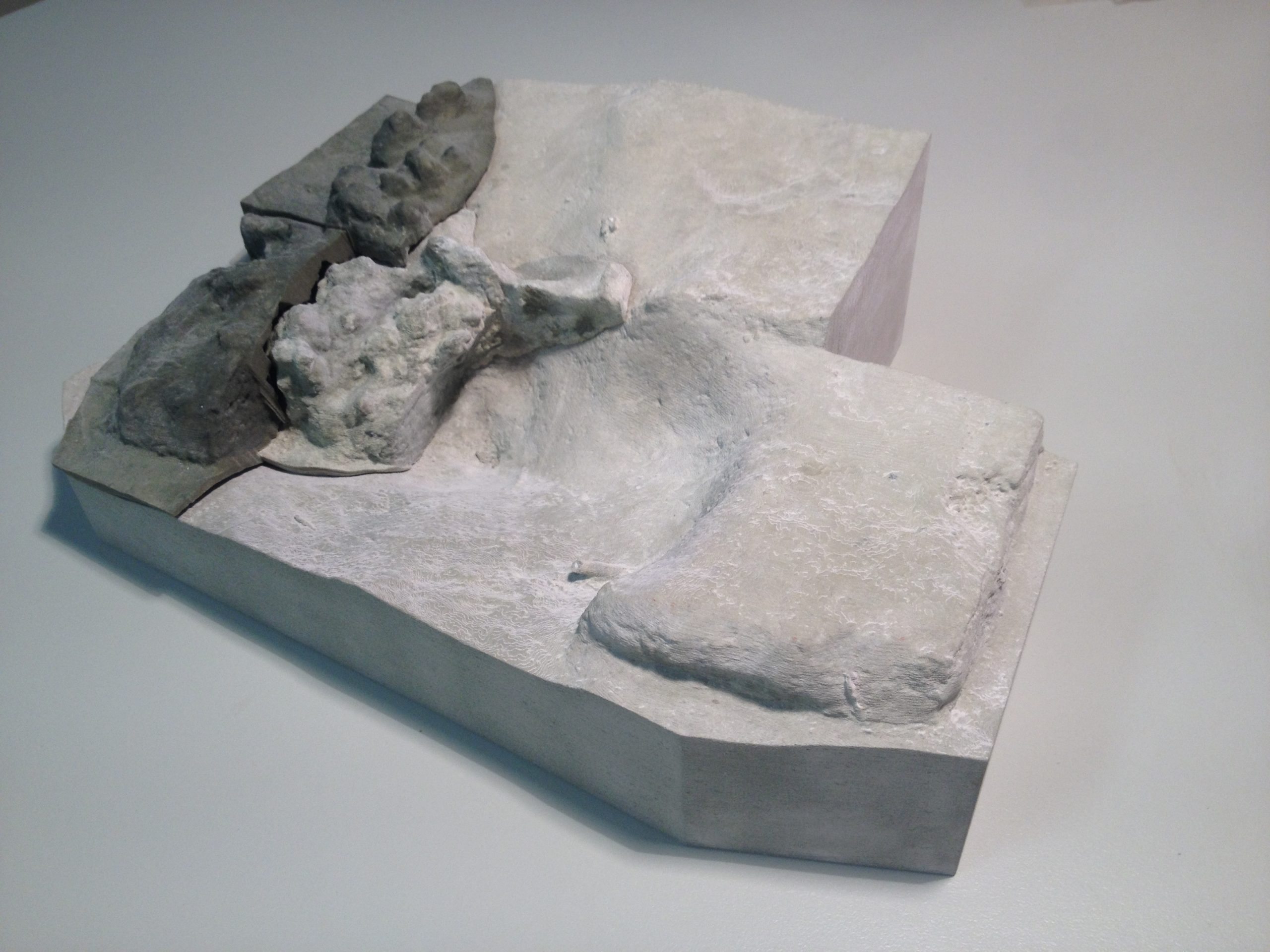
Image above: 3D printed scale model of the oven. The model can be taken apart to show the different layers within the oven and how it was constructed and used by Aboriginal people.
Clay Ball Manufacturing Site
Whilst we were finding a significant number of Aboriginal ovens and even more clay balls, we did not know how or where baked clay balls were being made by Aboriginal people. We uncovered a lot of clay balls which contained the impressions of sticks and finger marks from them being shaped by people’s hands. These were similar to the marks seen on clay balls in Victoria, South Australia and Western NSW.
Image right: 3D scanning the oven prior to archaeological excavation. The scan was used to create a digital model of the oven’s remains and 3D print the oven.
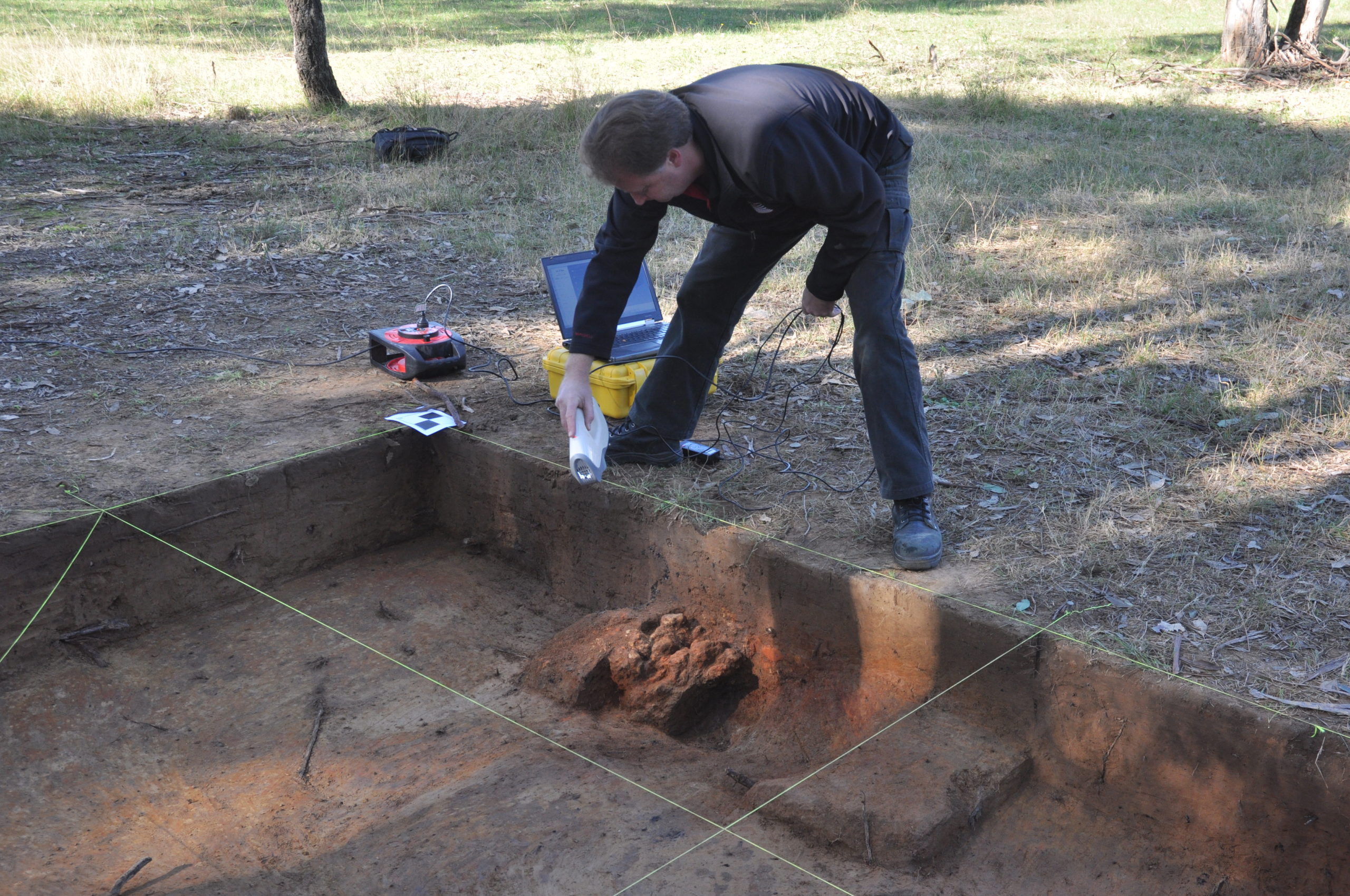
In one area we undertook a geophysical survey and identified a zone that had an unusual signature. We excavated a part of this zone and uncovered a very unusual Aboriginal site—a clay ball manufacturing area.
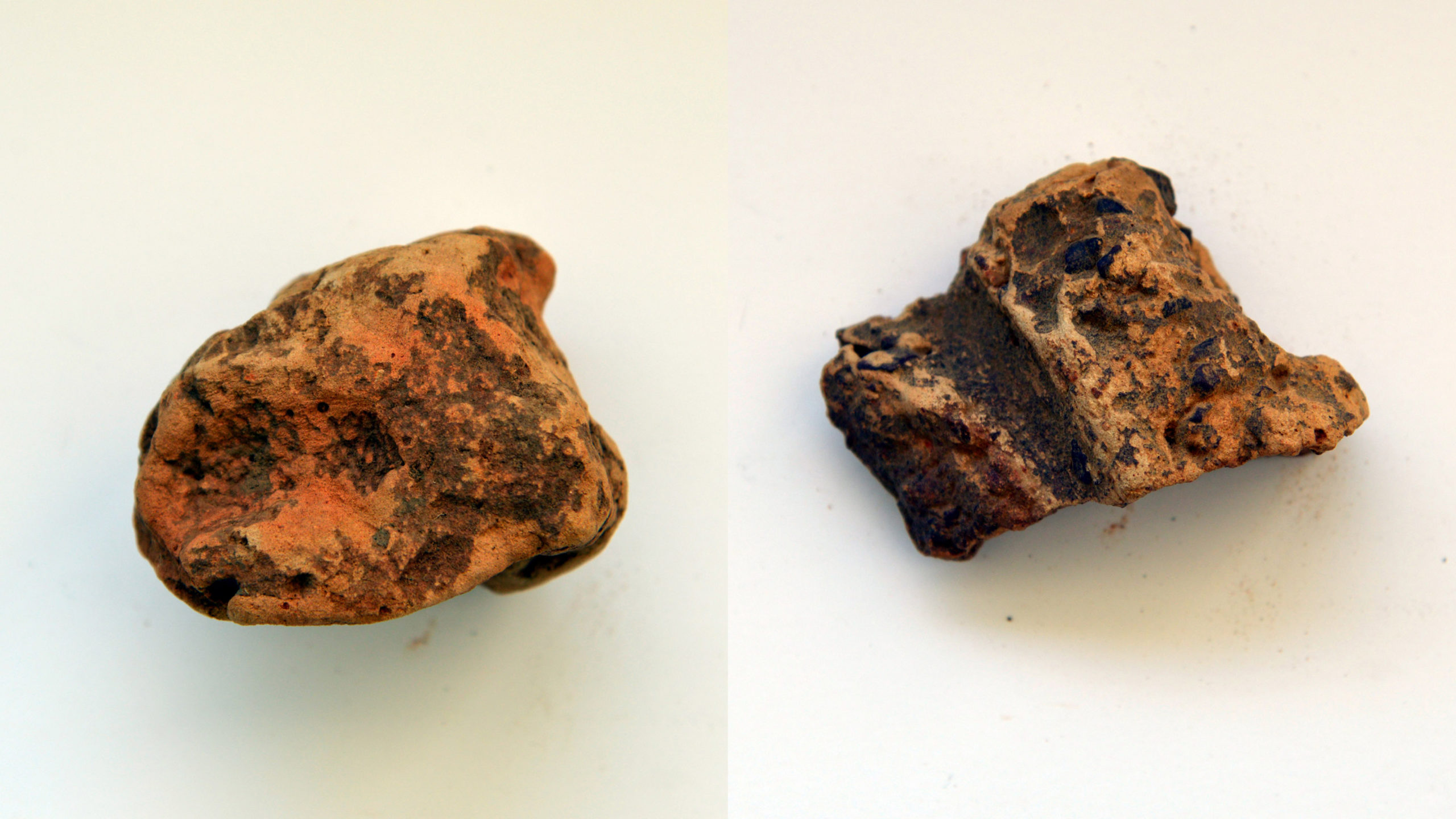
Image above: Baked clay ball showing a distinct finger formation impression and a baked clay ball with a gravel temper and stick formation mark
Despite being made of clay, baked clay balls are difficult to make so that they can be used in an oven. Aboriginal people developed an industrial process of manufacturing them, so as to make lots of balls during their summer time occupation of this landscape.
To manufacture baked clay balls, you need a source of suitable damp clay. This clay was shaped in the hand into a small round ball. The ball then had to be dried, and kept out of the sun and rain. Once the ball was dry it needed to be tempered in a low heat fire (a hot fire would cause the ball to shatter). Only once tempered could the clay ball be used in an oven. We don’t know how long clay balls would have lasted or how many times they could have been used in an oven.
The clay ball manufacturing site we excavated contained a small clay pit of red clay. Adjacent to this pit was a fire area where a hot fire had been built many times. In between these two areas was an excavated ‘flue’ or vent system, which was covered by clay balls and carbon. When the clay balls had been dried in the sun, a fire was constructed and a few of the coals would have been dragged into the base of the flues. The flue was covered (possibly by a sheet of paperbark) and the dried clay balls were spread over the flue system; these were then covered by small coals. This process tempered the clay balls and left them rock hard, ready for use in an oven. Our excavations also revealed a post hole adjacent to the flue; we believe a basic shelter covering was erected over the flue system to prevent any rain from falling on the tempering clay balls.
Image left: The flues fully excavated, with all clay balls and carbon removed. The flues are lined with clay and slope upwards from the centre. The post hole is visible on the right of the photograph.
